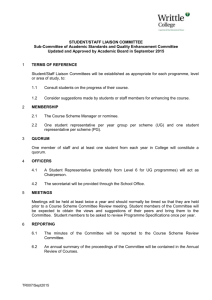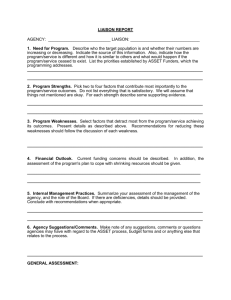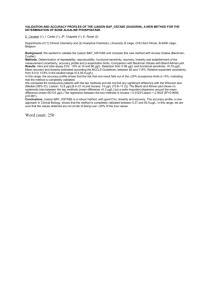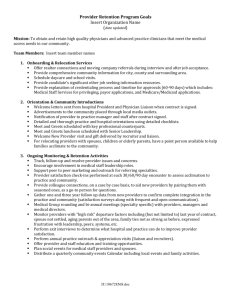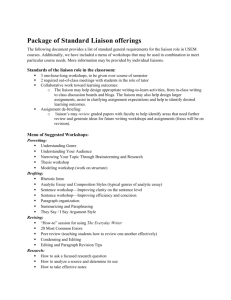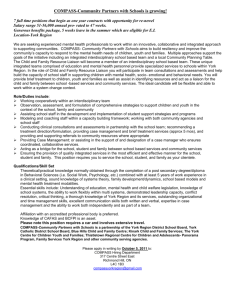March edition
advertisement
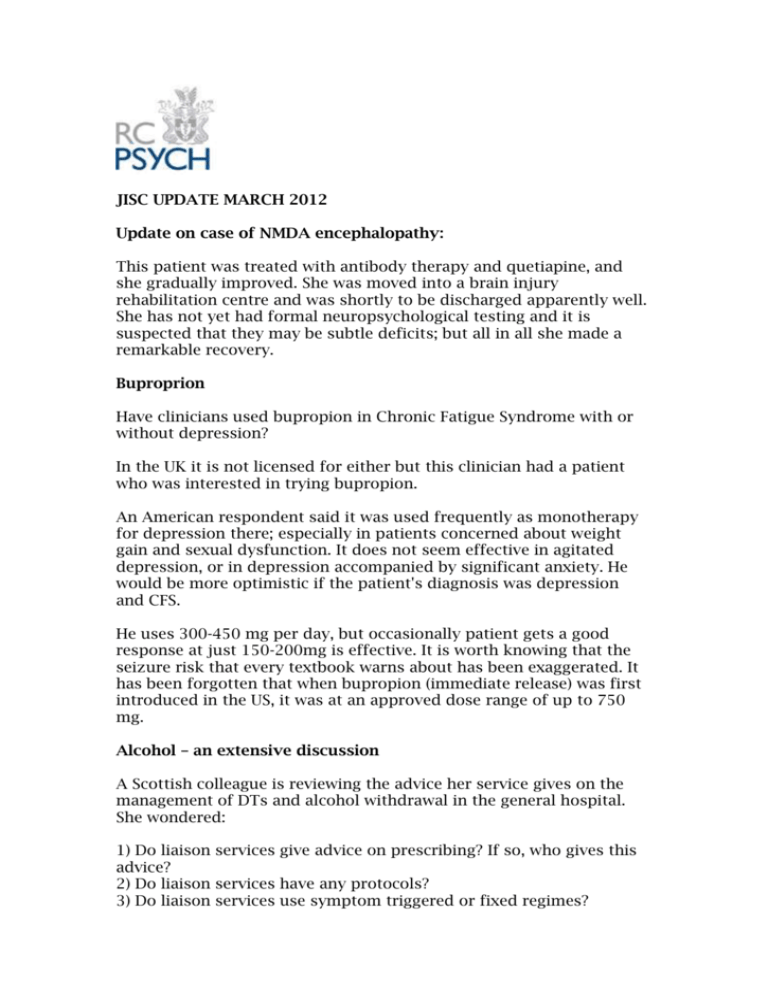
JISC UPDATE MARCH 2012 Update on case of NMDA encephalopathy: This patient was treated with antibody therapy and quetiapine, and she gradually improved. She was moved into a brain injury rehabilitation centre and was shortly to be discharged apparently well. She has not yet had formal neuropsychological testing and it is suspected that they may be subtle deficits; but all in all she made a remarkable recovery. Buproprion Have clinicians used bupropion in Chronic Fatigue Syndrome with or without depression? In the UK it is not licensed for either but this clinician had a patient who was interested in trying bupropion. An American respondent said it was used frequently as monotherapy for depression there; especially in patients concerned about weight gain and sexual dysfunction. It does not seem effective in agitated depression, or in depression accompanied by significant anxiety. He would be more optimistic if the patient's diagnosis was depression and CFS. He uses 300-450 mg per day, but occasionally patient gets a good response at just 150-200mg is effective. It is worth knowing that the seizure risk that every textbook warns about has been exaggerated. It has been forgotten that when bupropion (immediate release) was first introduced in the US, it was at an approved dose range of up to 750 mg. Alcohol – an extensive discussion A Scottish colleague is reviewing the advice her service gives on the management of DTs and alcohol withdrawal in the general hospital. She wondered: 1) Do liaison services give advice on prescribing? If so, who gives this advice? 2) Do liaison services have any protocols? 3) Do liaison services use symptom triggered or fixed regimes? 4) Do liaison services use diazepam, chlordiazepoxide, or something else? A respondent said that NICE recommends that triggered regimes are suited to teams that are highly trained in management of withdrawal. There is a lot of interest in RAID and the benefits of a dedicated Liaison Alcohol and Substance Consultant to support such implementation. Another very helpful response stated that they ‘get stuck in with alcohol withdrawal’; the rationale being that if you don’t then patients are referred later on with poorly managed detoxes and symptoms that the medics/surgeons interpret as "psychiatric". This psychiatrist thinks this is an area where liaison can really help patients and reduce readmissions, and he chairs the hospital alcohol strategy group. In this hospital: 1) The liaison team and the alcohol link worker (employed by the local alcohol agency, but working at the acute trust) give advice readily. 2) There is an explicit protocol drawn up by gastroenterology, pharmacy, liaison, nursing and local alcohol teams. 3) It is symptom triggered for 24 hours. Then the total dose for the first 24 hours is converted in to a fixed reducing regime with no prn for the next three to four days. 4) Chlordiazepoxide is used unless there is "liver failure" (high INR or Bilirubin) in which case Oxazepam is used. Ward nurses do 2 hourly CIWA scores for the first 24 hours and give a dose of chlordiazepoxide according to score (like an insulin sliding scale). Much effort was put in to training. Their acute medical unit (60 beds) and three other wards of 30 beds can all do it without much difficulty. But things still go wrong – e.g. problems getting A & E to start detoxes in timely way, patients drinking the hand gel etc. Overall though the detox situation is a lot better than it was. And they have noted some advantages that weren’t anticipated: There are fewer admissions for detox only - now rare. It's a lot easier not to admit people who don't have a co-morbid medical problem when the alcohol pathways are more explicit. Also, sometimes you will be the only psychiatrist to have assessed a patient when remotely sober - I probably see about 1 in 10 of our alcohol dependent patients each time round. A post-detox assessment can make a big difference to how generic mental health services respond to patients. Another respondent answered: 1) Locally this is managed by addictions liaison nurses supported by a consultant addiction psychiatrist 9-5, with the general liaison service only getting involved out of hours or in exceptional circumstances. There is considerable variation between sites: 24h cover by senior nurses with >10yr experience on detox wards on two sites, vs a community alcohol worker visiting the MAU ward round on another. Much advice is given by both nurses and doctors. 2) They have a two-page information sheet, plus a copy of the CIWA-Ar and an observation chart for serial CIWA-Ar scoring. 3) Practice varies. MAU wards may use symptom-triggered regimes, with fixed regimes (+ prn doses for 24-48h) on other wards - on the basis that general hospital nurses don't necessarily have the expertise to assess withdrawal and administer medication (i.e. training required for symptom-triggered regimes, to avoid people attempting to treat withdrawal symptoms with antiemetics, analgesics and antipsychotics) 4) Chlordiazepoxide is used unless there is hepatic impairment, in which case oxazepam is used. The criterion on the detox unit is oxazepam if GGT>1000. On our detox ward we also use diazepam "front-loading" schedules - i.e. up to 100mg of diazepam in the first 24h in increments of 5-20mg, and no more thereafter, relying on the long half-life to cover withdrawal symptoms. He would be uncomfortable prescribing a reducing schedule of diazepam over several days in view of its likely accumulation. Also: Locally it is crucial to keep impressing on successive waves of junior doctors how important it is to give parenteral thiamine. They have had patients admitted/transferred with frank Wernicke's who have had "door-to-needle" times in excess of 12h in the recent past. He also asked: 5) Is anyone using a diazepam "front loading" detox schedule in a general hospital (see 4 below)? An Irish colleague answered: ‘Yes. Diazepam 20mg every 90 minutes if CIWA-Ar >10 but only in the CDU of the ED, not in the main department or inpatient wards as less predictable staffing environment. When CIWA<10 x 3 or if >24 hours then stop. This can reduce LOS and cumulative BDZ dose. Reference: Symptom-triggered benzodiazepine therapy for alcohol withdrawal syndrome in the emergency department: a comparison with the standard fixed dose benzodiazepine regimen. Cassidy et al, EMJ 2011 A further response helpfully attached their policy on the management of patients in alcohol withdrawal. The ED and ward nursing staff are very competent at monitoring patients at risk of withdrawals. They use Diazepam 20 mg as standard treatment, but substitute with Oxazepam if the LFTs indicate poor liver function. The journal reference at the end of the policy (Foy et al) was written by D&A clinicians at their site. Alcohol Withdrawal.PDF Jackie Gordon Worthing
